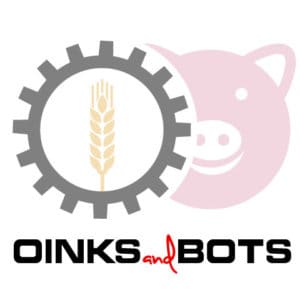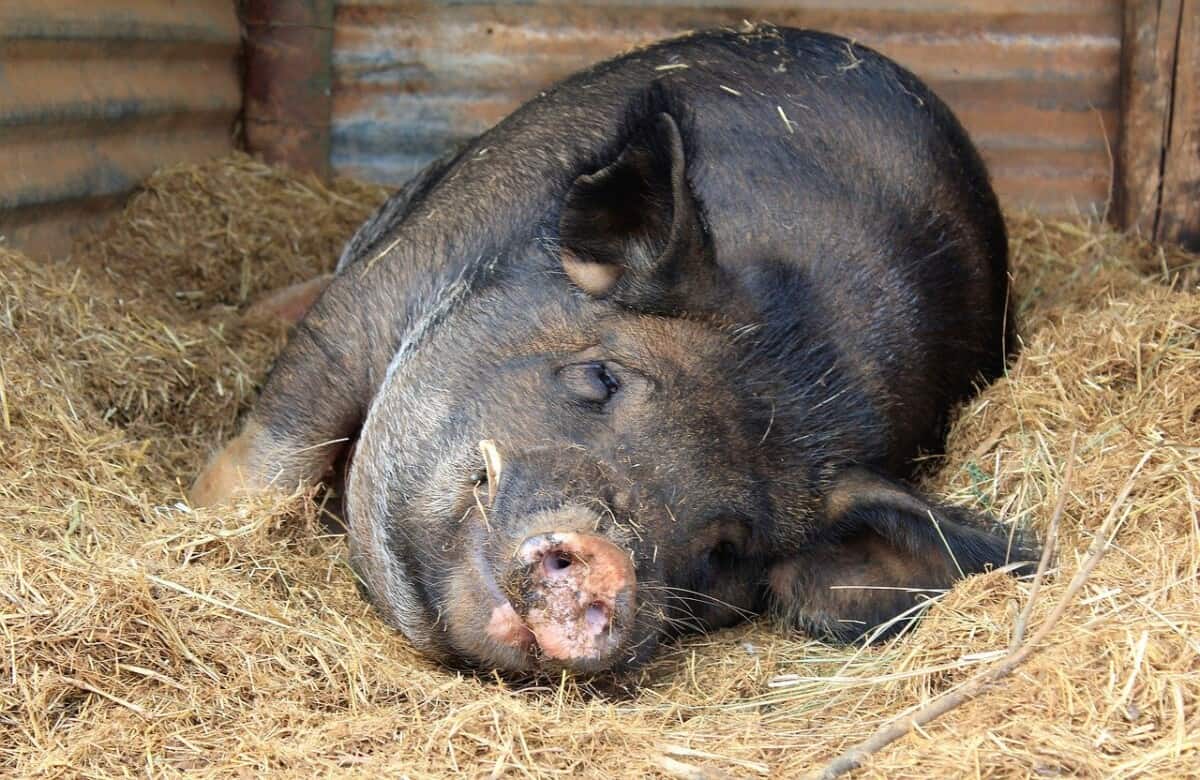Modern pig breeding is a highly industrialized branch of animal husbandry, in which it is simply impossible to do without the use of the most modern achievements of scientific and technological progress. The best profitability is shown by large automated pig farms that use the most advanced equipment, the use of which allows using innovative technologies. I touch on other topics in having a profitable piggery business here.
The reason for the intense development of this livestock industry is associated with an increase in the productivity of each animal, done by feeding pigs efficiently and economically (an increase in production without increasing the total herd population). This would of course lead to the modernisation of the industry and part of that would of course be advances in technology. Interested in other exciting technologies shaking up the agricultural world? Make sure to check out my articles on farming technology here!
In modern conditions of the livestock business, the most advanced equipment for pig breeding plays an important role. Yes, this comes with considerable costs, but as a competent owner, looking to the future, you understand the need to adapt to a rapidly changing economic landscape. This technology will more than pay off after three to four years and significantly reduce the cost of the resulting product.
The average cost of a sufficient amount of equipment required for a pig farm would be in the range of £15,000 (€17,000 or $20,000 in April 2021).
How To Best Orgainse A Pig Farm
Initially, when creating a modern pig breeding enterprise, you should take care of the premises. In addition to the fact that it must meet the requirements for keeping these animals, it is necessary to foresee the possibility of placing new equipment in it (not immediately, but in the future).
When building a modern pigsty, there are two approaches – building from scratch or renting a finished premises (with subsequent repair and mandatory disinfection). In either of the two options, even if you do not have enough funds to automate production just yet, you should take plan your pigsties with the aim to make them more automated.
To do this, you just need to leave the necessary space in your pigsty. In the future, with a significant increase in your livestock herd, your farm inevitably comes to the point of purchasing automated equipment for pig breeding, since manual labor is not only less efficient, but also more expensive financially. What kind of equipment are we talking about?
Equipment For Successful Pig Breeding
First of all, the pigsty must have a heating system, this is because many pig breeds have little to no fur to insulate them from the outside environment and so are susceptible to the cold. Secondly, with a serious approach to business, a supply and exhaust ventilation system is necessary. With a smaller number herd, simple ventilation can be done, but for larger enterprises this is not an option.
The main thing that not only a requirement for your pigs, but also lends itself well to automation is feeding and watering animals. Automatic feed systems vary by herd size and feed type. 80 percent of successful pig farms worldwide use dry feed. This can be an excellent method of keeping control of how much your pigs are being fed while also being time efficient.
With this approach to the diet, the equipment itself is much cheaper. In addition, the use of dry feed makes it possible to reduce the cost of maintaining the premises at a high level of sanitary and hygienic condition. Typically, such a feed distribution line includes:
- Storage bunker
- Loaders for delivering feed to the automated system
- Conveyors or transport lines, the task of which is to supply prepared feed mixtures to the feeders in accordance with a given program
- Special programmed dispensers for portioned feeding
Having provided in your farm an automated feed distribution line and automatic drinkers, do not forget about the old, proven manual feeders and drinkers, since sudden power outages or breakdown of automation should not interfere with the normal feeding process of animals.
If you need more information on what is best to feed your pigs, make sure to check out my article on swine nutrition.
A Pigsty Best For Pig Breeding
Construction or reconstruction of pig farms is possible with minimal construction materials and a modest budget. But this is not just construction work that can be banged out in a weekend, it is a whole complex of livestock buildings, automation and mechanization of technological processes, micro-climate, machine tools, such as feeding, ventilation and manure removal systems and many other important nuances.
When designing breeding pigsty, you may need to enlist the help of local experts to ensure that what you are building is not only optimal for pig breeding but is in keeping with local and national livestock guidelines.
Pig breeding enterprises should be provided with water resources for production. You also need to be aware of fire-fighting plans you have for your swine herd. If there is a fire, what plans have you got in place should you need to evacuate your herd? Part of this would include convenient access to roads. This will make getting your feed in and your waste out much easier. Not to mention, this will make your pigs easier to transport for slaughter.
Each zone of the pig farm should fulfill its functions as much as possible. This can include age and sex specific parts of the herd. For example, a sow that is pregnant will have very different needs to a young gilt, both in terms of space and nutritional requirements. I would advise on segmenting your pig farm accordingly, sows with piglets in one area, boars in another and young adults in another etc. This allows you to make sure that the feeding and watering equipment can be optimised for each group.
Ventilation System Best For Pigs
One of the determining factors in maintaining the health of animals, increasing their productivity and reproductive capacity is a favorable micro-climate at a pig breeding enterprise. Again, I can’t stress enough how vulnerable pigs are to temperature due to the lack of fur. Measures to create and maintain a micro-climate are directly related to a set of engineering and technical tasks that you can implement to control your pigs’ micro-climate.
Vents Best For Pigs
The concept of “micro-climate” is a combination of the chemical composition and physical properties of indoor air, namely, humidity, temperature, air flow rate, and the level of harmful gases. In other words, it’s all about how the indoor air affects your pigs. Each group of animals requires certain standards for the successful development of pig breeding. If you want to have a look at some of the best pig breeds, make sure to have a look at my article on the subject here.
One of the elements of a favorable micro-climate is the ventilation of your pigsties. Currently, there are many variations of ventilation systems. The choice should be based on the specifics of the structure of your location, on the groups of animals that are kept there and on the climatic conditions of the area. If you have warmer climates, you will need ventilation that encourages cooling and if you have cooler climates, you need ventilation that encourages heating etc.
Pigs typically have similar requirements of their environments that humans have (we are both relatively hairless after all). So a good indication as to what to have in your specific pig sty is to see what makes it comfortable for you. If it is too warm and humid for you, it likely will be for your pigs too and the same for if it’s too cold and dry.
Pig Feeding Equipment – How Best To Set It Up
There are two types of pig feeding:
- Liquid feeding
- Dry feeding. Dry feeding is most common because of its hygiene, economy and ease of maintenance
The technological range of this equipment consists of the following elements:
- Storage bins
- Conveyors
- Manure removal
Storage bins for storing feed for pigs
Storage bins are vital for making sure that your pigs are fed on time and appropriately. This is especially important if you are trying to fatten your pigs up quickly.
Benefits of storage silos:
- Mechanical or pneumatic filling function
- The presence of an optional inspection manhole
- The use of reinforced fiberglass and polyester in the production of structures for storage bins
- Resistance of structures to corrosion
- No need for conservation
- High level of thermal insulation, preventing condensation on the walls of the bunker
In addition, the advantage of these bunkers is the presence of a double outlet and a filling device, as well as separators that prevent foreign objects from entering the feed line.
Conveyor belt for feeding pigs
The main function of the conveyor is feeding feed into the feeders. Conveyors are spiral (used in a situation where it is possible to install a straight feed line) and chain-disc (used in cases where a complex feed line in several levels is needed).
Among the characteristics of dispensers, it is worth highlighting:
- The presence of a hole with a stopper for the introduction of medicines if needed
- The presence of a stainless steel cable, registers for which provide excellent linearity of tension, reduce friction and improve system performance
- The ability to manually set sliding gates for feeding in two directions.
- Adaptation of safety clips for pipes with a diameter of 50 to 90
Manure removal system for pigs
The manure removal system is one of the most important systems in your pigsty set up. The correct organisation of its work significantly reduces the morbidity of animals, reduces energy consumption and labor costs at a livestock enterprises.
One of the most effective manure removal for pigs is the “self-alloy” system due to its simplicity, versatility and low water consumption. Self-alloy system is a network of channels (baths) covered from above with plastic gratings or concrete slatted floors. Under these channels are pipes placed at a certain angle and having an anti-stick layer. The pipes are separated from the channels with plugs. After the plugs are lifted, the manure accumulated in the channels goes to the dump.
In small farms, a water flush system is sometimes used, which uses a large amount of water. In the pens for pigs, special channels are installed, covered with grates and the pigs excrete into theses channels. In front of the entrance to the storage tank, a flap valve is installed in order to prevent the liquid part of the manure from draining.
The system works on the principle of a water hammer – installation of a water tank at the beginning of the manure valve. Before cleaning, it is required to drain the tank with water, after which a hydraulic flush is started under water pressure and washes away the manure.

